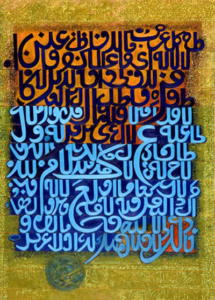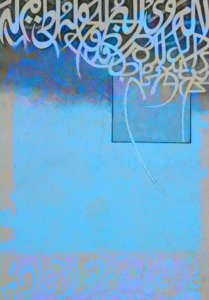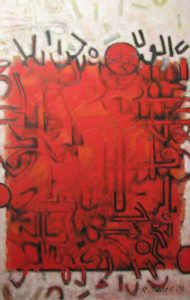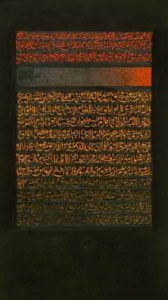Currently Empty: ₨0.00

In 1970, at the age of 16, I founded “Budding Talents” in Karachi—a group dedicated to providing a platform for showcasing talented individuals’ creativity and performances. Through this group, we held stage plays, music concerts, photographic competitions, painting, and other art exhibitions in major theatres and galleries for seven years. During one of the exhibitions organized at Arts Council Karachi in early 70s, a faculty member from the Institute of Arts & Design (located in the same premises) offered us free evening art sessions. This delightful news was conveyed to me by one of the group members.
We were a small group of fewer than 15 members at that time, and four of us, including myself, were interested in painting. We were thrilled by the opportunity and arrived to the classroom early on the appointed day. As we waited anxiously, gently jerking legs, tapping our shoes or criss-crossing and rolling fingers, several thoughts crossed our minds. While we were quietly exchanging our concerns about our lack of any formal art training, a smiling person entered the class and introduced himself as Rashid Ahmed Arshed.
To our amazement, he was informal, pleasant and friendly. He praised our efforts for promoting art among the youth and made us feel important. Within a few minutes, a relaxing rapport developed between him and us, making it feel as if we had been his students for a long time. He quickly assessed our knowledge level and began discussing the basics aspects of art, continuing these discussions in the following sessions. He used simple language and examples, making the concepts easy to understand and remember. These sessions have since played a major role in my understanding of painting, reflecting his caliber as an art teacher. Unfortunately, after a short time, he had to leave the country with his family under compelling circumstances. He is settled in USA and continues to enrich the world with his paintings, photography and books in Urdu laden with humorous satire.
Today, Rashid Arshed is the only living legendary painters of Pakistan who belongs to the generation of Ali Imam, Ahmed Parvez, Jamil Naqsh, Bashir Mirza, Colin David, Mansur Rahi and Sadequain. His subject has been calligraphy, which he does in a very unique way.
Calligraphy, the art of beautiful handwriting, has captivated cultures around the world throughout history. It has also gained significance as a form of spiritual expression for many. For Buddhists, it serves as a means to express devotion to God. During the Middle Ages, Christians illuminated pages of the Bible with intricate designs. Muslims elevated calligraphy to great heights, creating innumerable variations and styles to adorn buildings, tombstones, and to illuminate the Quran and other literary works.
It is no surprise that modern artists have drawn inspiration from classical masterpieces, infusing new meaning into the art of calligraphy. Rashid Arshed, one of the earliest proponents of contemporary calligraphy in Pakistan, has been using this art form consistently since the late sixties. He rarely employs readable words or phrases with literal relevance; instead, he incorporates these elements to achieve visual synthesis rather than convey a literal meaning.
Rashid Arshed draws inspiration from old manuscripts, architectural inscriptions, decrees, emblems, coins, and seals. He explores the pictorial characteristics of calligraphy, transforming them into modern paintings that emphasize form, linear rhythm, color, and texture. Though his work is rooted in the art of linear writing and historical forms, it showcases an inventive style that explores new possibilities of using Urdu letters as the subject to compose the space – his painting.
This approach evolved more than five decades ago and since then has resulted in numerous vibrant paintings that bear his unique visual, imaginative, and artistic expression. The works represent a new form of expression, valuing letters, colors, strokes, and textures. These paintings highlight his exceptional ability to use Urdu letters with limitless potential, setting him apart from other calligraphic artists. Arshed hopes his audience will not try to read his paintings, but rather enjoy them as they would any other work of art.
I believe that human beings react to forms and texts with their senses. In Rashid Arshed’s paintings, combinations of Urdu letters from various classical scripts, in a veritable and infinite metamorphosis of layered expression, draws the viewer into their illegible and mysterious world. This journey reveals the symphonies in the scripts, which can be heard and felt as one dwells deeper into these paintings – a psychosomatic sensation present in this magical art provides immense pleasure to the soul
I invite all art lovers, especially the younger generation of artists, to experience these symphonies and admire the magnificence of this art
By Dr. Arjumand Faisel










